The fighter colours of E. Krayer and Co. Paint, Daub and Varnish Factory 1
Introduction
For some years modellers and air historians have had serious debates about Krayer whether he was able to develop modern airplane colours meeting the requirements of the age. Several articles2, have been published both in English and Hungarian in which the authors claim that Krayer did develop their own airplane paints, namely G. 1100 (grey), G.1101 (light blue), G.1102 (brown), G.1103 (green) and H.1795 (terrain yellow).3 The Hungarian Museum of Chemistry stores the subsisting Krayer documents. István Próder4 said that among the documents there is an original material dispatch book. Based on its data, Krayer’s product range and their clients can be traced in the given period.5 Based on these data, Krayer’s production history can be researched as besides serial production, experimental and sample production had also been recorded.
The aim of my study is to describe the origin of G. 1100, G.1101, G.1102, G.1103 and H.1795 airplane paints.
Production of Aircraft Paint at Krayer’s
It was on 3 May 1939 that Krayer delivered a set of aircraft paints to Weiss Manfred Aircraft and Engine PLC (henceforth WM) for aircraft camouflage painting. At that time the paint factory sent the price list for 19 different products marked G (aircraft paint, ground coat, lack).6 If Krayer developed and produced this set of paints then by the time they made the quotation the development, pilot production, testing and serial production must have been completed. The production of such a set of paints required the full capacity of the factory for several days thus it must be included in the list of produced batches. However, in the delivery book there is no mention of the production of paints marked G between 18 November 1930 and 3 May 1939. This way it is unquestionable that paints marked G were not developed by Krayer. Although two batches are illegible, paints marked G consists of 19 batches. The formulas for paints marked G and H have been preserved and it came to light that the factory had delivered these products before the recipes were put down. If there is no formula, the paint cannot be produced. According to the data of the delivery book Krayer produced aircraft paint three times during this period. On 5 July 1934 grey ground coat and diluent, on 9 July 1934 oily enamel (marked C.39 and C.43) and aircraft oil paint (marked C.39 and C.43, too) and, finally, on 17 July 1934 oily aircraft enamel diluter and oily aircraft enamel (C.39) were produced.7 As these paints were oil based, they were completely different from the G set of aircraft paints!
Camouflage standards for Hungarian airplanes
On 1st June 1938 according to regulations G-(55) “Mottled Painting of Munitions” anti-surveillance colours (grey green, maroon and off-white) were introduced for airplanes.8 (No colour was defined for camouflaging the lower part of the fighters as it cannot be seen from the air when it is on the ground.) Based on the required standards Krayer prepared a colour catalogue “Camouflage colours against aerial surveillance”.9 The colours were sprayed with airbrush on 100x130mm pieces of of cardboard. The Krayer colour samples found in the original catalogue are very similar to the German RAL (Reichs Ausschuss Lacke) and RLM (Imperial Aeronautical Ministry) colour cards. They were compared to maroon RAL8019, greyish green RAL 6003 and off-yellow RAL 7028. Based on the given colour samples, we can state that German camouflage colours were used for painting fighters in Hungary.
Analysing colours on fighter wrecks
If the pants on the fighters are relatively undamaged and in good condition the colours can be identified after burnishing and polishing the upper layer. The pieces from the wrecks used for analysis originate from types produced or overhauled in Hungary. In order to prove the existence of Krayer fighter colours the colour analysis of the paints deriving from the wrecks of Ju.86 from the collection of Attila Áder were used in the book Hungarian Fighter Colours.10 On page 42 the book gives the approximate Federal Standard equivalents and on page 48 there are colour sample photos of Krayer paints. There is no FS reference colour sample next to the wreck that could show the readers how precise the FS numbers given by the authors are. The colour sample photos – blue G.1101 (p. 49) and RLM 65 (p. 50) – were taken of the same Me.109 main gear door. The red area in the photo is reference to G.1101 and the blue area shows RLM 65 in the book.
I myself have also carried out the analysis on the wrecks and called the authors attention that the identification of blue is faulty as there is only an RLM blue sheet and it is not possible to identify Krayer blue using this piece. On 23 October 2013 Dénes Bernád wrote a public letter stating “We enlarged and rotated the photos and they show the same object (probably one in natural light and the other one with flash). It is a regrettable mistake”.11 In Attila Áder’s collection there is no Ju.86 wreck piece that would have blue paint appropriate for identification. Moreover, he has not got a blue sheet from any other type. Based on the above, we can declare that there was no original sample and Krayer G.1101 has been mistakenly identified as an approximate equivalent of FS25550. In the second part of the book Hungarian Fighter Colours the readers’ attention was called to the fact that the photos on p.198 taken of the blue sheet were faulty but the problem regarding the FS sample blue colour was not mentioned.
On the sheet placed next to RLM colour sample it can be seen that it is a standard German colour completely different from the given FS sample.
The brown paint found on Ju.86 wreck piece is identified by the two authors as Krayer G.1102 and given as FS equivalent FS 10049 colour card.12 On the same piece of wreck I have also analysed the paint. On the left side there is a piece of paint originating from the wreck can be seen on the FS card provided by the authors. On the right it is on the FS card nearest to it.
A piece of paint originating from the Ju.86 wreck is placed on RLM 61 colour sample.
Based on the photos, it can be seen that there is an FS card approximately the colour of the paint on the wreck, however, it has been omitted from the book. The piece of paint originating from the wreck is almost the same as sample RLM 61 so it is sure that it is a German colour.
The green piece of paint originating from the wreck has been identified as Krayer G 1103 whose approximate FS equivalent was given as FS 34094.13 I have also analysed the paint on the same piece of wreck. On the left a piece of paint originating from the wreck can be seen on the FS card provided by the authors and on the right side it is on the FS card nearest to it.
The piece of paint originating from the Ju.86 wreck is placed on RLM 62 colour sample.
Based on the photos, it can be seen that there is an FS card is approximately the colour of the paint on the wreck, however, it has been omitted from the book. The piece of paint originating from the wreck is similar to sample RLM 62. The slight difference complies with the tolerance of wartime production.14
The analysis carried out by the two authors is correct just only in the case of the grey paint found on the wreck, i.e. FS 26187. I compared the colour of the paint to RAL colour cards and the equivalent of the paint on the sheet is RAL 7005.
In their second book the authors have given G.1103 green colour for the camouflage dark green colour in the colour drawings of Héja-M fighters based on their colour analysis they had carried out on Héja-M horizontal stabilizer from Gábor Horváth’s collection. According to the authors Héja-M was painted with the same colours as those found on Ju.86 wreck.15 I have also carried out the analysis on Héja-M horizontalstabilizer from Gábor Horváth’s collection and on the piece of fuselage skinowned by me. On both pieces of the wreck the colour is similar to sample RLM 71. On Héja-M sheet Ju.86 colour sample can be seen and next to it there is RLM 71 colour card.
The colour samples of Ju.86 and Héja-M show considerable difference, however, in the book they are of the same colour.
While researching the origin of the colours I have carried out further paint analysis. In the collection of the Air-Force Museum Szolnok there is a Ju.86 wreck with some blue paint.
The colour from Ju.86 is almost the same as RLM 64 blue sample so it is sure that it is a German paint.
W.M.21 Sólyom
The original green colour from Sólyom engine cover is almost the same as sample RLM 62.
On the main wheel cover owned by László Takáts the green colour is similar to sample RLM 62.
The grey colour from the cover is almost the same as RAL7005:
From a reference by Krayer we got to know that Sólyom was painted with Herbig-Haarhaus paint16, which means that the green and grey colours on the cover are RLM paints/colours. The green and grey colours deriving from Ju.86 are the same as those from Sólyom. Out of the three camouflage paints of Ju.86 two are proven to be of German origin based on the photos, in conclusion, the third colour also has to be German. Based on the above, we can state that the grey of Ju.86 is an early version of Herbig-Haarhaus which later was probably labelled RLM 63.
Remarks concerning the series of articles published in Haditechnika magazine
In the series of articles I have found several mistakes that can be appropriate to change the facts published in the articles based on the documents:
1, Quotation from the article17: „A WM válasza a 12 darab WM-16A (Bp-9) géphez szükséges festékmennyiség kalkulációs kérése lehetett, mert a Krayer erre adott válasza 1934. augusztus 21-én …” (“WM’s reply could have been a request for the quotation for the quantity of paint for 12 WM-16A (Bp-9) fighters as Krayer’s reply of 21 August 1934…”)
Among the MNLMOL Z407-19-146 documents there is no Krayer letter dated 21 August 1934. The authors proved with this non-existent letter that Krayer had been producing Krayer paints of Titanine quality.18 In the following part of the articles the authors stated: “There is no evidence to prove that Krayer would have sold Titanine products least paints!” However, on the back of a WM Flight Department order a clerk of WM, Mr Blaha, had written the following: “Dear Dr Billitz, We have not received the prices from Krayer Co. regarding Titanine paints!”.19 This remark makes it undisputable that Krayer did sell Titanine paints!
2, Quotation from the article20: „A rep.gépek fényezésének minőségi összehasonlításául szolgál(nak) az Önök által megküldött minták a Herbig-Haarhaus német lakkgyár anyagával készült repülőgépek”. (“The samples sent by you are used to check and compare the quality of the fighters’ polishing QUALITY OF the German Herbig-Haarhaus Lack Factory”.)
The original document does not contain “the sent samples” and the authors added to this by not separating it from the quotation from the original text. With the inserted text the authors wanted to prove that not the quality but the colour of the Krayer paints equal the German paints they had referred to. If Krayer refers to the ready aircraft the quality of the paints cannot be checked just their colour accuracy, refraction, uniformity of the colour, adhesion, droopingsurface quality (unpolluted painting). It means that paint family “G” sold by Krayer had the same colours as the German ones!21 Moreover, WM placed an order for green, brown, grey and blue paints for the camouflage painting of Sólyom from János Lingel Jr. the Hungarian representative of Herbig-Haarhaus A.G. on 12 August 1938 and red, white and green, too, for painting the national colours. In his reply Lingel sent the Herbig-Haarhaus quotation. At WM three materials were marked to be delivered by Krayer in case an order was placed.22
3, Quotation from the article23: „A Krayer cég levéltári iratanyaga közt fennmaradt egy érdekes dokumentum „Titanine festékek” címmel. … A felületes szemlélő hajlamos arra gondolni, hogy itt azonos termékek ár összehasonlításáról van szó, azaz ezek a gyárak a Titanine anyagok viszonteladói lehettek.” (“There is an interesting document among the documents of Krayer Co. titled “Titanine paints”… The superficial observer tends to think that this is a comparison of prices for the same products i.e. these factories must have been the distributors of Titanine products.”)
On 16 May 1935 a chart had been made, with the initials B1, entitled “The prices of Titanine aircraft lacks”. In the columns of the table the German paints (spannlack, überzugslack etc.) are given while the lines contain the names of the paint factories and their prices (Titanine in Marks; Krayer, Győr in Dán pengő). In the last column of the table written in pencil there is a remark at WM “Ordered at Krayer”.24
It means that in Hungary there were several factories selling Titanine paints and WM had chosen Krayer from these to be their distributor.
I had called the authors’ attention to these mistakes but only the non-existing letter had been left out from their study published lately in the Annual of the Hungarian Flight History Association, the other mistakes had not been corrected.
Summary
The documents and wreck paint samples described above prove that Krayer did not develop fighter paints and the fact that the Royal Hungarian Airforce used German camouflage paints.
The authors had given faulty FS colour samples in their previous publications to justify their theory of fighter colours produced and developed in Hungary and had changed the contents of the documents to prove their concepts.
1 Hereinafter: Krayer
2 In English Dénes Bernád, György Punka: Hungarian fighter colours 1930-1945. Vol. 1 and Vol.2. Mushroom Model Publications 2013, 2014. Poland (Hereinafter: Bernád-Punka: Hungarian fighter colours 1.), and Dénes Bernád, György Punka: „Magyartarka” – Lakkok, festékek, álcázószínek a Magyar királyi Honvéd Légierő repülőgépein. Haditechnika magazine XLVIII./ 4.-5.-6. szám (Hereinafter Bernád-Punka: „Magyartarka”).
3 Bernád-Punka: „Magyartarka”. Haditechnika magazine XLVIII./5. 62. p and Bernád-Punka: Hungarian fighter colours 1. 41. p. Name of colours from original formula for paint. Hungarian Museum of Chemistry (Magyar Vegyészeti Múzeum, MVM), Budalakk Krayer documents 18492-18493, Formula for paint.
4 Managing Director, facilitating the professional work of the Foundation for the Hungarian Chemical Museum’s Board of Trustees, retired director of the Museum of Chemistry
5 Statements of István Próder.
6 Hungarian National Archives (Magyar Nemzeti Levéltár Magyar Országos Levéltár, MNLMOL) Z-407-19-146, Krayer documents.
7 Hungarian Museum of Chemistry (Magyar Vegyészeti Múzeum, MVM), Budalakk Krayer documents, 18459. doboz, Material dispatch book.
8 Library of Military History, Defence Gazette No14
9 Offering Tamás Baczoni
10 Bernád-Punka: Hungarian fighter colours 1. 42. and 49. p.
11 www.makettinfo.hu, Könyvek, folyóiratok topic, 7 january 2014.
12 Bernád-Punka: Hungarian fighter colours 1. 42. p.
13 Bernád-Punka: Hungarian fighter colours 1. 42. p.
14 There is a minimal discrepancy of German paints as lots of producers delivered paints to RLM.
15 Bernád-Punka: Hungarian fighter colours 2. 255., 257. p.
16 Hungarian National Archives (MNLMOL), Z-407-19-146, Krayer árajánlat.
17 Bernád-Punka: „Magyartarka”. Haditechnika magazine XLVIII./5. 56. p.
18 Hungarian National Archives (MNLMOL), Z407-19-146 Krayer levelezés.
19 Hungarian National Archives (MNLMOL), Z407-19-146 Krayer levelezés.
20 Bernád-Punka: „Magyartarka”. Haditechnika magazine XLVIII./5. 60. p.
21 Hungarian National Archives (MNLMOL), Z407-19-146 Krayer levelezés
22 Hungarian National Archives (MNLMOL), Z407-143-2257 Lingel documents.
23 Bernád-Punka: „Magyartarka”. Haditechnika magazine XLVIII./6. 15.p.
24 Hungarian National Archives (MNLMOL), Z407-19-146 Krayer documents






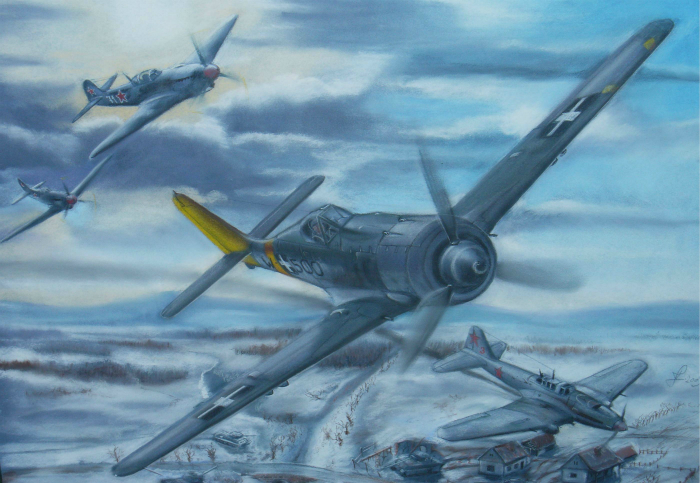

 |
| 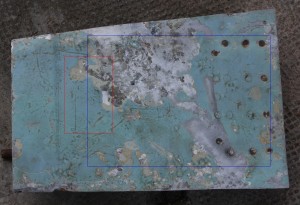
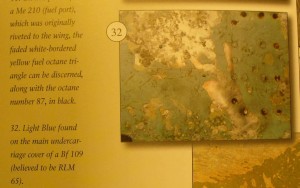
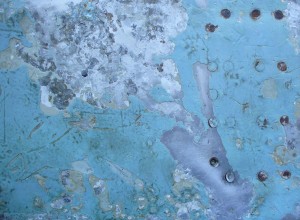
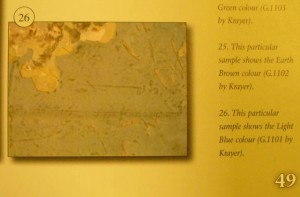
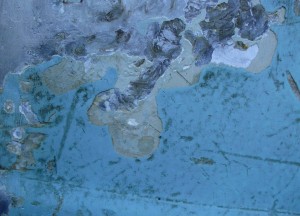
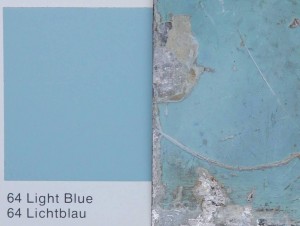
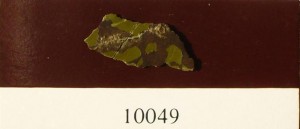



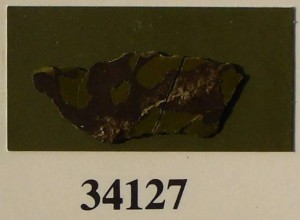
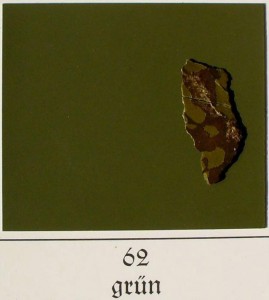

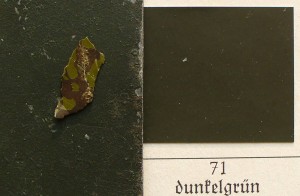
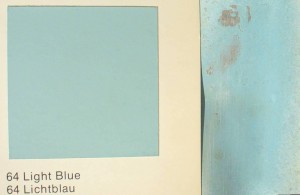
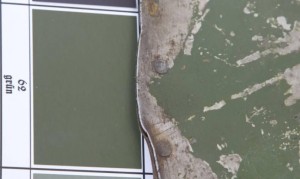
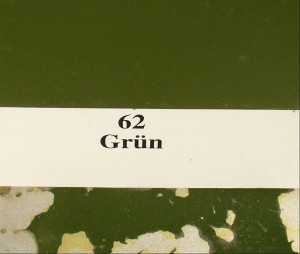
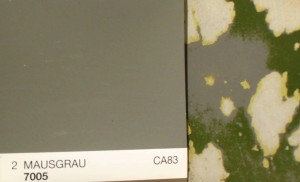

Leave a reply